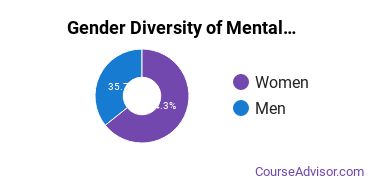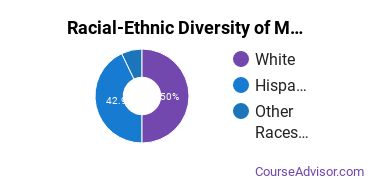Mental & Social Health Services at Oxnard College
Oxnard College is located in Oxnard, California and approximately 6,994 students attend the school each year.
Want to know more about the career opportunities in this field? Check out the Careers in Mental & Social Health Services section at the bottom of this page.
Featured Oxnard College Programs
Learn about start dates, transferring credits, availability of financial aid, and more by contacting the universities below.
BA in Psychology - Mental Health
Gain a strong foundation in the concepts involved with mental health therapy and assessment with this specialized online bachelor's from Southern New Hampshire University.
BS in Community Health Education
Focus on improving the health of individuals based on their lifestyle needs with this specialized online bachelor's from Southern New Hampshire University.
Oxnard College Mental & Social Health Services Degrees Available
- Basic Certificate in Mental Health Services (Less Than 1 Year)
- Undergrad Certificate in Mental Health Services (1 - 4 Years)
- Associate’s Degree in Mental Health Services
Featured Oxnard College Programs
Learn about start dates, transferring credits, availability of financial aid, and more by contacting the universities below.
BA in Psychology - Mental Health
Gain a strong foundation in the concepts involved with mental health therapy and assessment with this specialized online bachelor's from Southern New Hampshire University.
BS in Community Health Education
Focus on improving the health of individuals based on their lifestyle needs with this specialized online bachelor's from Southern New Hampshire University.
Oxnard College Mental & Social Health Services Rankings
Find Oxnard College Programs
BA in Sociology - Community Health
Become a force for the public good by exploring current trends in health and health policy from a national and global perspective with this specialized online bachelor's from Southern New Hampshire University.
Mental Health Services Student Demographics at Oxnard College
Take a look at the following statistics related to the make-up of the mental health services majors at Oxnard College.
Oxnard College Mental & Social Health Services Associate’s Program

Oxnard College does a better job with serving racial-ethnic minorities than the typical school does. Its associate's program in mental health services graduates 30% more racial-ethnic minorities than the nationwide average.*
The following table and chart show the race/ethnicity for students who recently graduated from Oxnard College with a associate's in mental health services.

| Race/Ethnicity | Number of Students |
|---|---|
| Asian | 0 |
| Black or African American | 2 |
| Hispanic or Latino | 13 |
| White | 6 |
| International Students | 0 |
| Other Races/Ethnicities | 3 |
Concentrations Within Mental & Social Health Services
If you plan to be a mental health services major, you may want to focus your studies on one of the following concentrations. The completion numbers here include all graduates who receive any type of degree in this field from Oxnard College. Some of these focus areas may not be available for your degree level.
| Concentration | Annual Degrees Awarded |
|---|---|
| Substance Abuse/Addiction Counseling | 14 |
Related Majors
Careers That Mental Health Services Grads May Go Into
A degree in mental health services can lead to the following careers. Since job numbers and average salaries can vary by geographic location, we have only included the numbers for CA, the home state for Oxnard College.
| Occupation | Jobs in CA | Average Salary in CA |
|---|---|---|
| Marriage and Family Therapists | 21,920 | $51,950 |
| Healthcare Social Workers | 18,600 | $76,450 |
| Clinical, Counseling, and School Psychologists | 17,310 | $108,350 |
| Substance Abuse Social Workers | 14,840 | $61,640 |
| Psychiatric Technicians | 8,900 | $64,500 |
References
*The racial-ethnic minorities count is calculated by taking the total number of students and subtracting white students, international students, and students whose race/ethnicity was unknown. This number is then divided by the total number of students at the school to obtain the racial-ethnic minorities percentage.
More about our data sources and methodologies.

